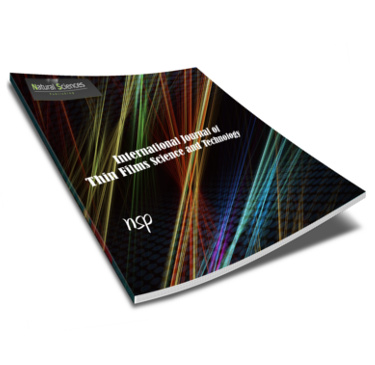International Journal of Thin Film Science and Technology

Efficient and Recyclable Cu Incorporated TiO2 Nanoparticle Catalyst for Organic Dye Photodegradation
Abstract
Highly efficient Cu-doped TiO2 photocatalysts (CTO) with variation in Cu concentration (4 to 16 wt.%) were prepared via a modified sol-gel technique. X-ray diffraction (XRD) data indicate a pure anatase structure with a small crystallite size of 22.16 nm obtained for CTO-12 (12 wt.% Cu). The average crystallite size and energy bandgap with variation in Cu doping were also studied. All the samples exhibited a spherical morphology. The increment in the Cu concentration caused a systematic decrease in the photoluminescence (PL) intensity, which indicated a lower recombination rate of electron-hole pairs and hence higher separation efficiency. CTO-12 served as the best-suited photocatalyst, tested for photocatalytic degradation of cationic basic (methylene blue, rhodamine B) and anionic acidic (Methyl orange) dyes under UV light irradiation. The comparative study illustrates higher degradation efficiency obtained for cationic dyes than anionic dyes in the order of RhB>MB>MO. The highest degradation (95.3%) was obtained for RhB dye in 180 min. In addition, the further kinetic study suggested the degradation of dyes followed the first-order kinetics. The recyclability data demonstrated superior stability and reliability of the photocatalyst, suggesting its future utilization in potential wastewater treatment applications.
Recommended Citation
Sagadevan Ethiraj, Anita; S. Rhen, Danielle; V. Soldatov, Alexander; A. M. Ali, Gomaa; and H. Bakr, Zinab
(2021)
"Efficient and Recyclable Cu Incorporated TiO2 Nanoparticle Catalyst for Organic Dye Photodegradation,"
International Journal of Thin Film Science and Technology: Vol. 10
:
Iss.
3
, PP -.
Available at:
https://digitalcommons.aaru.edu.jo/ijtfst/vol10/iss3/6

